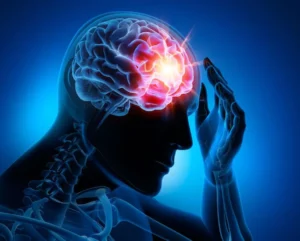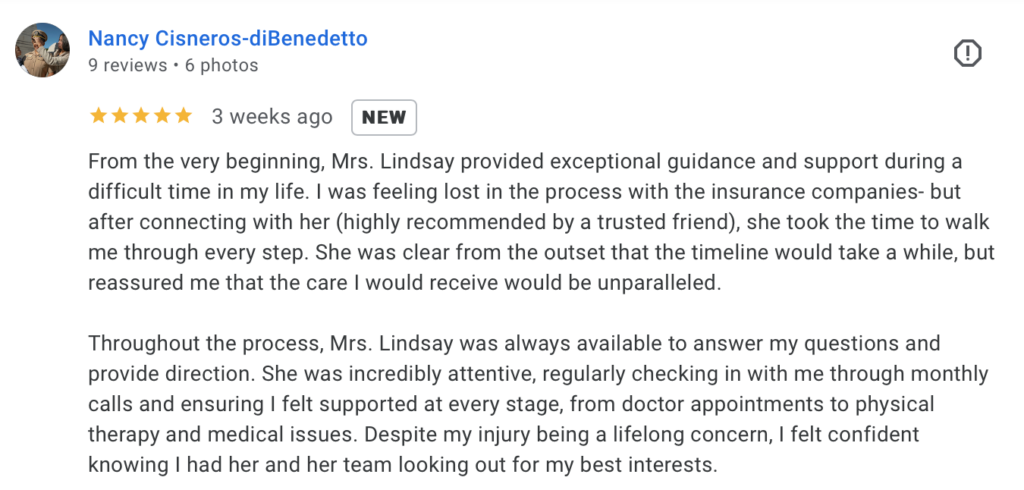
Have you suffered a brain injury in San Diego, CA, due to someone else’s negligence? Finding the right legal advocate to stand by your side is crucial for your recovery. You may be entitled to compensation, and a San Diego personal injury lawyer with experience in brain injuries can make all the difference.
We’ll be able to guide you through each phase of the legal process, giving you the best chance at recovering what you deserve through a personal injury claim. In addition to brain injuries, we have experience handling other personal injury cases, such as bicycle accidents, medical malpractice, pedestrian accidents, child accidents, catastrophic injuries, and more.
Contact the law office of Pines Salomon Personal Injury Lawyers at (858) 551-2090 to schedule a free consultation with a San Diego brain injury lawyer. Alternatively, you can visit our conveniently located personal injury office in San Diego, CA.
How Pines Salomon Personal Injury Lawyers Can Help If You Sustained a Brain Injury in California

If you’ve been involved in an accident in San Diego, California, leading to a brain injury, we are ready to support you. Here’s how our San Diego brain injury attorneys can help:
- We will provide legal advice on the best course of action after your accident.
- We will collect all relevant evidence, including medical records and witness statements.
- We will handle all communications with the insurance company so you don’t have to worry. This is to ensure you receive a fair settlement offer.
We have over 30 years of experience and have won tens of millions of dollars for our clients. Moreover, we have been recognized by Super Lawyers, Martindale-Hubbell, and America’s Top 100 Personal Injury Attorneys for our achievements.
Contact Pines Salomon Personal Injury Lawyers to schedule a free consultation with a San Diego personal injury attorney.
How Common Are Brain Injuries in California?
Unfortunately, brain injuries are frequent incidents in California and across the country, with statistics underscoring the seriousness of the issue:
- In the United States, there are approximately 53,000 deaths each year due to brain injuries and 235,000 trips to the hospital.
- There are also 1.1 million trips to the ER each year because of traumatic brain injuries.
- In California, TBI contributed to 2,912 deaths among older adults in 2020.
- For older adults in California, TBI also caused 17,528 hospitalizations and 15,708 emergency department (ED) visits that year.
If you’re one of the people who has experienced a brain injury, you may be entitled to compensation. Reach out to a lawyer as soon as possible.
What Is My Brain Injury Case Worth?
The value of your brain injury case can depend on a variety of factors, and each case is unique. While it’s impossible to predict an exact amount without reviewing the specifics, the following are some of the primary elements that typically influence the value of a brain injury claim:
The Severity of the Injuries and Medical Expenses
Generally, the more severe your injuries are, the higher the settlement or verdict amount will be. Current medical expenses plus anticipated future costs for treatments play a role in determining case value.
The At-Fault Party’s Willingness to Negotiate
A successful resolution relies on how open the other party and their insurance company are to settling the claim fairly. If they acknowledge responsibility and wish to avoid a trial, they might propose a more substantial settlement early in negotiations.
Insurance Coverage Limits
The at-fault party’s insurance coverage limits can also cap how much compensation is available in your case. If their policy limit is lower than what your case is worth, you will have to agree to settle for less than your damages, or you may have to file a personal injury lawsuit against the at-fault party.
Strength of the Evidence
The strength of your case and how much you’ll receive hinges on the quality and amount of evidence you can present. Strong, clear evidence that another party’s negligence caused your injury will typically increase the value of your claim because it improves the likelihood of winning at trial, meaning the at-fault party will be willing to provide a fair amount during settlement discussions.
If you’ve experienced a brain injury, the best way to determine what you’re entitled to is to reach out to a personal injury lawyer as soon as possible.
What Kind of Damages Are Available to Brain Injury Victims?
Victims of brain injuries may be entitled to multiple forms of damages. Understanding these categories is crucial so you know what compensation to pursue. Common types include:
Economic Damages
Economic damages refer to clear out-of-pocket costs associated with the injury, such as medical expenses, rehabilitation costs, lost wages from time off work, and property damage. In most cases, these losses can be calculated and documented fairly easily.
Non-Economic Damages
Non-economic damages are harder to quantify as they refer to the subjective, non-monetary impact of your injury. Non-economic damages can cover pain and suffering, emotional distress, loss of enjoyment in life activities that you can no longer participate in due to the injury, and loss of consortium or companionship.
Punitive Damages
Punitive damages are less common and may be awarded in cases where the defendant’s actions were particularly negligent or harmful. Unlike economic and non-economic damages, which are awarded to compensate the victim for their loss and suffering, punitive damages are designed to punish the wrongdoer and serve as a deterrent for similar future conduct.
Each type reflects different aspects of your losses due to a brain injury. A brain injury attorney can help you determine what you may be entitled to.
Can I Recover Compensation if I’m Being Blamed For a Brain Injury in California?
You can still recover compensation if you’re being blamed for a brain injury in California due to the state’s pure comparative negligence rule. However, your degree of fault reduces the amount of damages awarded to you. For example, if it’s determined that you were 25% responsible, you would be able to recover 75% of the damages awarded to you.
We’ll Fight to Recover Compensation For All Of Your Brain Injuries
Brain injuries can vary widely in terms of severity and impact. Some common types include:
- Traumatic brain injuries
- Concussions
- Contusions
- Diffuse axonal injuries
- Penetrating brain injuries
- Acquired brain injuries (like those caused by a lack of oxygen)
No matter what type of brain injury you’re experiencing, we can help you recover compensation.
What Causes Most Brain Injuries in San Diego, California?
In San Diego, California, brain injuries can occur in several ways. Common causes include:
- Motor vehicle accidents
- Falls from heights
- Bicycle and pedestrian collisions
- Sports-related incidents
- Physical assaults or violence
- Workplace accidents
If you’ve experienced a brain injury in San Diego, it’s important to seek legal guidance, as you may be entitled to compensation for your losses.
How Do I Prove Negligence After a Brain Injury in California?
To prove negligence following a brain injury in California, you’ll be required to establish the following legal elements.
- Duty of Care: First, you must show that the other party had a duty of care. This means that they were supposed to act in a certain way to prevent harm.
- Breach of Duty: Next, you must provide evidence that the at-fault party failed or breached this duty by acting negligently or not taking reasonable actions expected under the circumstances.
- Causation: You must demonstrate a clear link between their breach and your injury.
- Damage: Finally, you must show that you suffered actual damages as a result. This usually includes medical expenses, lost wages, or emotional distress.
Navigating the complex process of establishing negligence after a brain injury can be difficult, but a lawyer can help you.
How Long Do I Have to File a Lawsuit After a Brain Injury Accident in California?
In California, you typically have two years from the date of the accident to file a personal injury lawsuit after a brain injury. However, specific circumstances might affect this timeline. It’s always best to reach out to a lawyer as soon as possible after an incident, and they can help determine the exact deadline for your case and ensure that you don’t forfeit your right to pursue compensation due to missed deadlines.
Contact Our San Diego Brain Injury Lawyers For a Free Consultation
If you’re dealing with a brain injury or you have a loved one who has experienced one, it’s important to take the right steps to get the justice and compensation you deserve. We understand how difficult these situations can be, as brain injuries have lasting effects on the victim and their loved ones. If you need help, we’re here for you. Contact Pines Salomon Personal Injury Lawyers to schedule a free consultation with a San Diego brain injury lawyer.
Our Personal Injury law firm in San Diego also provides legal services in the following practice areas:
- Bicycle Accident Lawyers in San Diego, CA
- Car Accident Attorneys in San Diego, CA
- Catastrophic Injury Attorneys in San Diego, CA
- Child Accident Attorney in San Diego
- Construction Accident Lawyers in San Diego, CA
- Dog Bite Accident Lawyers in San Diego, CA
- Medical Malpractice Attorneys in San Diego
- Motorcycle Accident Lawyer in San Diego, CA
- Nursing Home Abuse Attorney in San Diego
- Pedestrian Accident Lawyers in San Diego
- Slip and Fall Accident Lawyers in San Diego, CA
- Truck Accident Attorneys in San Diego, CA
- Uber Accident Attorney in San Diego, CA
- Wrongful Death Lawyers in San Diego
San Diego, CA, Brain Injury Lawyer Review

https://maps.app.goo.gl/bsogApeowbL4VMNr5
Read more of our client reviews here.
Visit Our Personal Injury Law Office in San Diego, CA
Pines Salomon Personal Injury Lawyers
835 Fifth Ave #302,
San Diego, CA 92101
Phone: (858) 551-2090
San Diego, CA, Emergency Rooms
- Naval Medical Center San Diego Emergency Room – Building 1, 34800 Bob Wilson Dr #200, San Diego, CA 92134
- Scripps Mercy San Diego Emergency Room – 4077 Fifth Ave, San Diego, CA 92103
- Sharp Memorial Hospital Emergency Room – 7901 Frost St, San Diego, CA 92123
*Disclaimer – we do not endorse these companies or profit from having them listed on our website.

